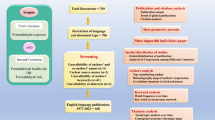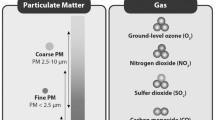Abstract
Environmental and occupational exposure to vanadium (V) dusts results in inflammation mainly confined to the respiratory tract. Macrophages apparently play an important role in mediating the inflammation via the production of many chemokines. In the current study, we investigated whether vanadium can regulate the gene expression of a CXC chemokine macrophage inflammatory protein-2 (MIP-2), and to determine the molecular mechanisms controlling MIP-2 gene expression. A mouse macrophage cell line RAW 264.7 was treated with sodium metavanadate (NaVO3) at the dose of 0.5, 5, or 10 μg/ml V. Northern blot analysis showed that induction of MIP-2 mRNA expression was in a dose-dependent manner. To define the time course of the inflammatory response, RAW 264.7 cells were exposed to 5 μg/ml V, MIP-2 mRNA in macrophages increased markedly as early as 1 h after treatment, maximally induced at 4 h and reduced to 2-fold above control levels by 6 and 8 h. The protein levels of MIP-2 in conditioned media, measured by enzyme-linked immunosorbent assay (ELISA), was well correlated with the levels of MIP-2 mRNA following all of the treatments in the study. In addition, the increase in MIP-2 mRNA expression by vanadium was attenuated by co-treatment with the antioxidant N-acetylcysteine (NAC), at the doses of 10 and 20 mM, suggesting that the induction of MIP-2 mRNA is mediated via the generation of reactive oxygen species (ROS). To further investigate transcriptional regulation of the MIP-2 gene expression by vanadium, we performed RNA decay assay by measuring the half-life of MIP-2 mRNA. Co-treatment of macrophages with the transcriptional inhibitor actinomycin D at 5 μg/ml following exposure to 5 μg/ml V for 4 h revealed complete stabilization of vanadium-induced MIP-2 mRNA and no sign of mRNA degradation, at least, for 6 h, in comparison to the half-life of MIP-2 mRNA was approximately 2.5 h by bacterial lipopolysaccharide (LPS) treatment, supporting post-transcriptional stabilization as the predominant role of MIP-2 gene expression. In conclusion, these observations demonstrate that in vitro vanadium can induce MIP-2 mRNA expression, mediating, at least in part, via the production of ROS. In addition, the increase in MIP-2 mRNA level involves, most likely, post-transcriptional control via increased mRNA stability.
Similar content being viewed by others
REFERENCES
NECHAY, B. R. 1984. Mechanisms of action of vanadium. Ann. Rev. Pharmacol. Toxicol. 24:501-524.
GOYER, R. A. 1991. Toxic effects of metals. In Toxicology. M. O. Amdur, J. Doull, and C. D. Klaassen, eds., 4th ed. Pergamon, New York, 623-680.
LEVY, B. S., L. HOFFMAN, and S. GOTTSEGEN. 1984. Boilermakers' bronchitis: Respiratory tract irritation associated with vanadium pentoxide exposure during oil-to-coal conversion of a power plant. J. Occup. Med. 26:567-570.
KIVILUOTO, M. 1980. Observations on the lungs of vanadium workers. Br. J. Ind. Med. 37:363-366.
OPPENHEIM, J. J., C. O. C. ZACHARIAE, N. MUKAIDA, and K. MATSUSHIMA. 1991. Properties of the novel proinflammatory supergene “intercrine” cytokine family. Annu. Rev. Immunol. 9:617-648.
MILLER, M. D., and M. S. KRANGEL. 1992. Biology and biochemistry of the chemokines: A family of chemotactic and inflammatory cytokines. Crit. Rev. Immunol. 12:17-46.
BAGGIOLINI, M., B. DEWALD, and B. MOSER. 1994. Interleukin-8 and related chemotactic cytokines-CXC and CC chemokines. Adv. Immunol. 55:97-179.
AHUFA, S. K., J. L. GAO, and P. M. MURPHY. 1994. Chemokine receptors and molecular mimicry. Immunol. Today 15:281-287.
DAVTELIS, G., P. TEKAMP-OLSON, S. D. WOLPE, K. HERMSEN, C. LUEDKE, C. GALLEGOS, D. COIT, J. MERRY WEATHER, and A. CERAMI. 1988. Cloning and characterization of a cDNA for murine macrophage inflammatory protein (MIP), a novel monokine with inflammatory and chemokinetic properties. J. Exp. Med. 167:1939-1944.
DRISCOLL, K. E., D. G. HASSENBEIN, B. W. HOWARD, R. F. ISFORT, D. CODY, M. H. TINDAL, M. SUCHANEK, and J. M. CARTER. 1995. Cloning, expression, and functional characterization of rat MIP-2: a neutrophil chemoattractant and epithelial cell mitogen. J. Leukoc. Biol. 58:359-364.
TEKAMP-OLSON, P., C. GALLEGOS, D. BAUER, J. MCCLAIN, B. SHERRY, M. FABRE, S. V. DEVENTER, and A. CERAMI. 1990. Cloning and characterization of cDNAs for murine macrophage inflammatory protein 2 and its human homologues. J. Exp. Med. 172:911-919.
WOLPE, S. D., B. SHERRY, D. JUERS, G. DAVATELIS, R. W. YURT, and A. CERAMI. 1989. Identification and characterization of macrophage inflammatory protein 2. Proc. Natl. Acad. Sci. USA 86:612-616.
TSAI, C. S., M. M. SHI, J. J. GODLESKI, and J. D. PAULAUSKIS. 1996. Manganese-induced pulmonary inflammation and increased expression of pro-inflammatory cytokine mRNA in rat lung cells. Am. J. Respir. Critical. Care Med. 153:A614. (Abstr.)
PIERCE, L. M., F. ALESSANDRINI, J. J. GODLESKI, and J. D. PAULAUSKIS. 1996. Vanadium-induced chemokine mRNA expression and pulmonary inflammation. Toxicol. Appl. Pharmacol. 138:1-11.
GRABOWSKI, G. M., J. D. PAULAUSKIS, and J. J. GODLESKI. 1999. Mediating phosphorylation events in the vanadium-induced respiratory burst of alveolar macrophages. Toxicol. Appl. Pharmacol. 156:170-178.
CANTLEY, L. C. JR., and P. AISEN. 1979. The fate of cytoplasmic vanadium. J. Biol. Chem. 254:1781-1784.
MEISTER, A. and M. E. ANDERSON. 1983. Glutathione. Annu. Rev. Biochem. 52:711-760.
SHI, M. M., J. J. GODLESKI, and J. D. PAULAUSKIS. 1996. Regulation of macrophage inflammatory Protein-1α mRNA by oxidative stress. J. Biol. Chem. 271:5878-5883.
METINKO, A. P., S. L. KUNKEL, T. J. STANDIFORD, and R. M. STRIETER. 1992. Anoxia-hyperoxia induces monocyte-derived interleukin-8. J. Clin. Invest. 90:791-798.
RALPH, P. and I. NAKOINZ. 1977. Antibody-dependent killing of erythrocyte and tumor targets by macrophage-related cell lines: enhancement by PPD and LPS. J. Immunol. 119(3):950-954.
RASCHKE, W. C., S. BAIRD, P. RALPH, and I. NAKOINZ. 1978. Functional macrophage cell lines transformed by Abelson leukemia virus. Cell 15:261-267.
CHOMCZYNSKI, P., and N. SACCHI. 1987. Single-step method of RNA isolation by and guanidmium-thiocyanate-phenol-chloroform extraction. Anal. Biochem. 162:156-159.
SHI, M. M., A. KUGELMAN, T. IWAMOTO, L. TIAN, and H. J. FORMAN. 1994. Quinone-induced oxidative stress elevates r-glutamylcysteine synthetase activity in rat lung epithelial L Z cells, J. Biol. Chem. 269:26512-26517.
HUANG, S., J. D. PAULAUSKIS, J. J. GODLESKI, and L. KOBZIK. 1992. Expression of macrophage inflammatory protein-2 and KC mRNA in pulmonary inflammation. Am. J. Pathol. 141:981-988.
FARON, A., S. HUANG, J. D. PAULAUSKIS, and L. KOBZIK. 1995. Airway neutrophilia and chemokine mRNA expression in sulfur dioxide-induced bronchitis. Am. J. Respir. Cell Mol. Biol. 12:345-350.
DRISCOLL, K. E., L. SIMPSON, J. CARTER, D. HASSENBEIN, and G. D. LEIKAUF. 1993. Ozone inhalation stimulates expression of a neutrophil chemotactic protein, macrophage inflammatory protein 2. Toxicol. Appl. Pharmacol. 119:306-309.
FARONE, A. L., C. W. FREVERT, M. B. FARONE, M. J. MORIN, B. N. FIELD, J. D. PAULAUSKIS, and L. KOBZIK. 1997. Serotype-dependent induction of Pulmonary neutrophilia and inflammatory cytokine gene expression by reovirus. J. Virol. 70:7079-7084.
NEMERY, B. 1990. Metal toxicity and the respiratory tract. Eur. Respir. J. 3:202-219.
ELSBACH, P. and J. WEISS. 1983. A reevaluation of the roles of O ?2 dependent and O ?2 independent microbicidal systems of phagocytes. Rev. Infect. Dis. 5:843-853.
ROSSI, F. 1986. The O ?2 -forming NADPH oxidase of the phagocytes: nature, mechanisms of activation and function. Biochim. et. Biophy. Acta 853:65-89.
SHI, M. M., J. J. GODLESKI, and J. D. PAULAUSKIS. 1995. Molecular cloning and posttranscriptional regulation of macrophage inflammatory protein-1? in alveolar macrophages. Biochem. Biophys. Res. Commun. 211:289-295.
SHI, M. M., I. W. CHONG, J. J. GODLESKI, and J. D. PAULAUSKIS. 1999. Regulation of macrophage inflammatory protein-2 gene expression by oxidative stress in rat alveolar macrophages. Immunol. 97:309-315.
CHEN, F. Y., F. M. AMORA, and J. A. WRIGHT. 1993. Mammalian ribonucleotide reductase R1 mRNA stability under normal and phorbol ester stimulating conditions: involvement of a cis-trans interaction at the 3' untranslated region. EMBO J. 12:3977-3986.
BREWER, G. 1991. An A+U-rich element RNA-binding factor regulates c-myc mRNA stability in vitro. Mol. Cell Biol. 11:2460-2466.
MALTER, J. S. 1989. Identification of an AUUUA-specific messenger RNA binding protein. Science 246:664-666.
SHAW, G. and R. KAMEN. 1986. A conserved AU sequence from the 3' untranslated region of GM-CSF mRNA mediates selective mRNA degradation. Cell 46:659-667.
MALTER, J. S. and Y. HONG. 1991. A redox switch and phosphorylation are involved in the post-translational up-regulation of the adenosine-uridine binding factor by phorbol ester and ionophore. J. Biol. Chem. 266:3167-3171.
Author information
Authors and Affiliations
Rights and permissions
About this article
Cite this article
Chong, IW., Lin, SR., Hwang, JJ. et al. Expression and Regulation of Macrophage Inflammatory Protein-2 Gene by Vanadium in Mouse Macrophages. Inflammation 24, 127–139 (2000). https://doi.org/10.1023/A:1007098508014
Issue Date:
DOI: https://doi.org/10.1023/A:1007098508014




